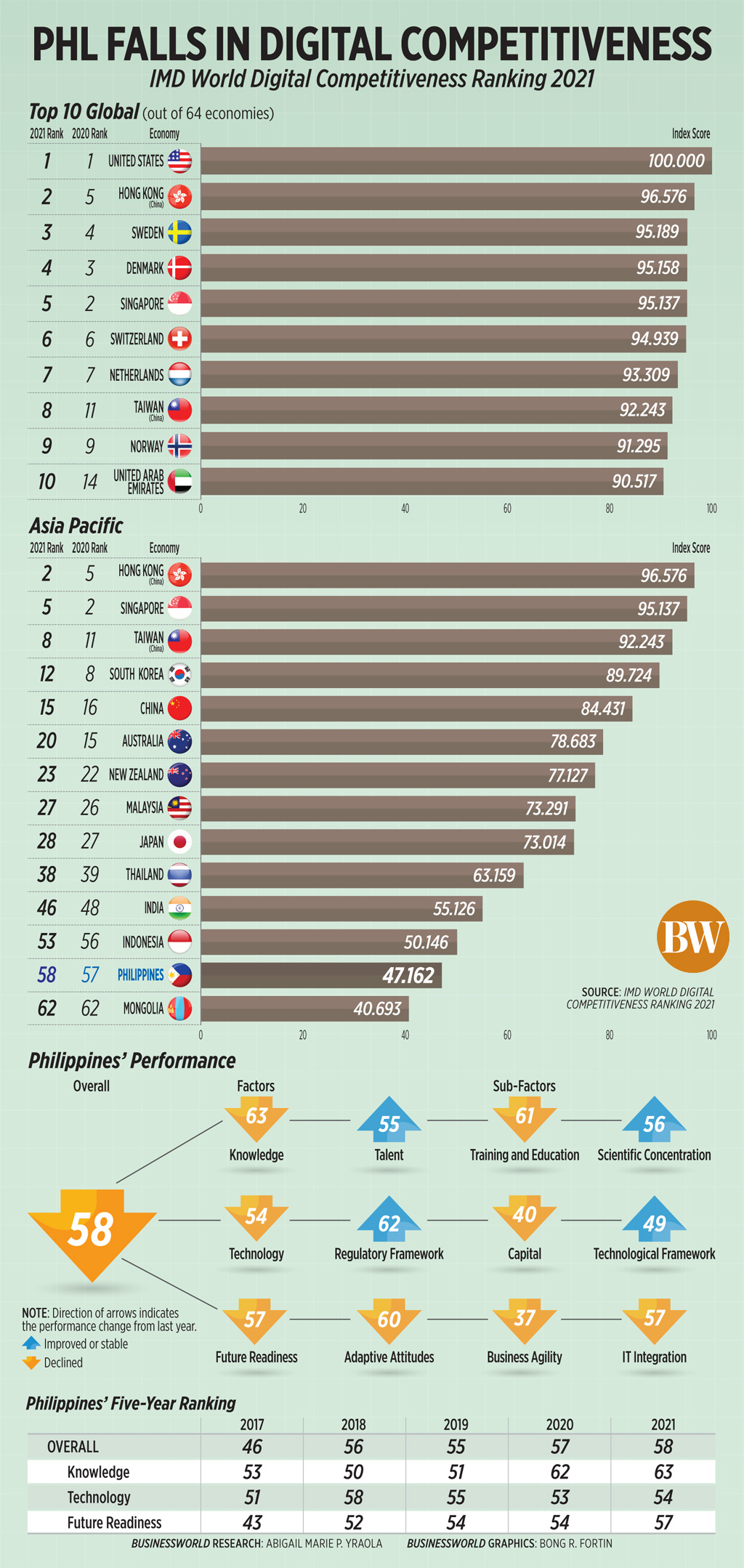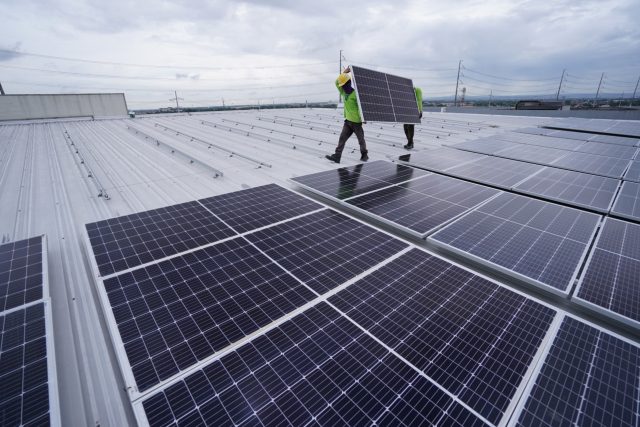Philippines’ digital competitiveness slips
By Jenina P. Ibañez, Reporter
THE PHILIPPINES slipped one spot to 58th in a global digital competitiveness index as a result of declines in future readiness, technology and knowledge.
The country placed 58th out of 64 economies in IMD business school’s World Digital Competitiveness Ranking 2021, after falling to 57th place in 2020 from 55th a year earlier. It retained the 13th spot among the 14 Asia-Pacific economies measured.
Each economy is ranked in indicators grouped under three pillars. The Philippines fell three spots to 57th in the “future readiness” pillar after poorer performance in adaptive attitudes, business agility, and information technology integration.
The Philippines also dropped by one place in the “technology” pillar after a decline in capital, and it sank by one spot in the “knowledge” pillar as its training and education rank fell.
American Chamber of Commerce of the Philippines Senior Advisor John Forbes called the decline “very concerning” especially after its Asia-Pacific ranking declined to 13th from 11th in 2017.
While he notes good reforms in digital commerce and government transactions, he said the biggest concern is still infrastructure.
“The country has very weak common towers networks,” he said in a mobile message on Wednesday. “The Open Access to Data Transmission bill has not even had one hearing in the Senate. Over 50 business groups have urged the Senate to open telecommunications to full foreign private sector ownership in the Public Service Act amendments.”
George T. Barcelon, Philexport chairman, said in a mobile message that the decline reflects the inadequacy of local information technology infrastructure in coping with the additional capacity needed as more people work from home during the lockdown.
“We must remember other nations are also improving theirs and the indexing is relative to them. In other words, relatively others can be doing better than us, while we did not advance to their pace,” he said.
The Philippines’ strengths are in sciences graduates, female researchers, investment in telecommunications, entrepreneurial fear of failure, and high-tech exports.
Its weaknesses are communications technology, internet users, internet bandwidth speed, enforcing contracts, and starting a business.
Topping the World Digital Competitiveness index were the United States, Hong Kong, Sweden, Denmark, and Singapore.
“The countries who seem to have performed better are those that have managed to have a strong presence in future readiness, that is, with flexible and agile individuals as well as firms, and to integrate the IT technologies in their daily practice. In addition, leading economies are characterized by strong performance in training and education. Finally, leading economies have the ability to allocate capital towards learning and developing new technologies,” the IMD World Competitiveness Center said in the report.
Trade Assistant Secretary Allan B. Gepty at a virtual event on Wednesday said the country must have a stable and predictable digital environment as more people buy goods online, which he said could be done through international agreements.
“More than passing laws, rules and regulations that are comprehensive and responsive to the changing environment, it is important to have some degree of uniformity or harmony of certain core rules and disciplines on digital economy in the international spectrum,” he said.
“We need to work and collaborate with other economies in identifying challenges as well as the necessarily rules to govern the digital economy. If we can well define this environment, then we can promote trust in the digital economy.”















